Original Neapolitan Lasagna
True Neapolitan lasagna is a rich and sumptuous dish prepared for special occasions and holidays such as Christmas, but mainly during Carnival. It is a tradition to make it on Fat Tuesday (symbolizing prosperity before Lent’s fasting and penance period) at Easter, and even for Father’s Day.
It’s a sure success that everyone, adults and children, always enjoys. This is my grandmother’s recipe that I have cherished for years.
Its preparation may seem laborious, but it’s just about organization: you can prepare it a whole day in advance and bake the next day, or divide the various preparations into steps. For example, you can fry the meatballs the day before, and I highly recommend preparing the ragù in advance, both for convenience and because it tastes better when “rested.”
The ingredients that must never be missing in true Neapolitan lasagna are: dry semolina lasagna (preferably curly), ragù with pork, ricotta, tiny fried meatballs, salami (or alternatively, Lucanian dry sausages or ragù sausage), hard-boiled eggs, smoked provola, caciocavallo, and grated Parmesan.
That said, you can omit meatballs and hard-boiled eggs if you don’t like them.
In truth, Jeanne Caròla Francesconi (the bible of Neapolitan cuisine) writes about Neapolitan lasagna, stating that the traditional version consists of: dark ragù, meatballs, ricotta, lasagna, sausage slices (browned separately with oil and lard, then added to the ragù with their juices), and fiordilatte (or mozzarella). She specifies that lasagna with salami (or dry sausages) instead of fresh sausage and hard-boiled eggs is a variant from Pozzuoli (a town a few kilometers from Naples), but I must say that over the years the Pozzuoli variant has surpassed the traditional one described by Francesconi (although personally, I prefer the latter).
If you love Neapolitan cuisine, click on my Special: “AUTHENTIC NEAPOLITAN CUISINE“.
If you’re looking for other Carnival recipes (sweet or savory), click on my: “Carnival Special“.
You might also be interested in:
- True Neapolitan Ragù, explained step by step
- White Neapolitan Lasagna with White Ragù (Without Bechamel)
- Bolognese Ragù explained step by step. Original foolproof recipe
- Easy Artichoke Lasagna with Provola Emmental and Cooked Ham.
- Pistachio Lasagna with Mortadella and Provola. Easy recipe step by step.
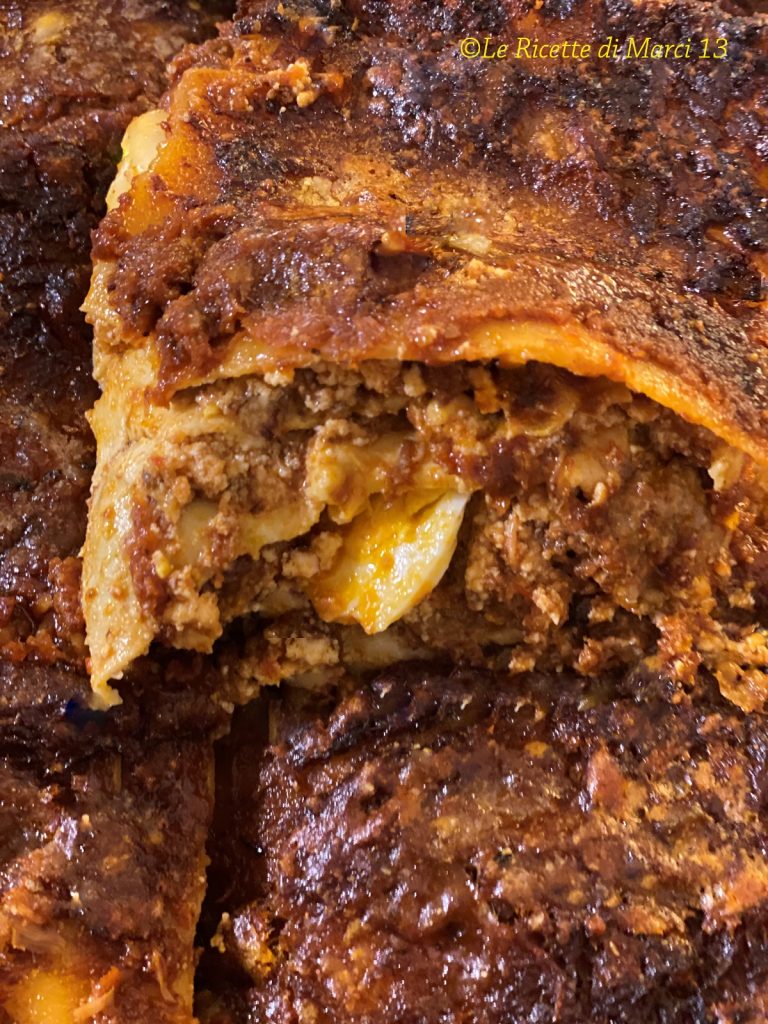
- Difficulty: Medium
- Cost: Medium
- Rest time: 8 Minutes
- Preparation time: 1 Day
- Portions: 10 people
- Cooking methods: Oven, Frying
- Cuisine: Regional Italian
- Region: Campania
- Seasonality: All seasons, Carnival
Ingredients for the Original Neapolitan Lasagna
- 2.2 lbs curly lasagna (hard wheat, I use Garofalo)
- 1.3 lbs ricotta (Roman)
- 10.6 oz smoked provola (well drained, diced or fiordilatte drained for at least one day)
- 10.6 oz caciocavallo (preferably silano, diced or scamorza)
- 5.3 oz Neapolitan salami (in strips, or spicy Lucanian dry sausages)
- 3 hard-boiled eggs (sliced, optional)
- to taste Parmigiano Reggiano PDO (for garnish)
- to taste butter (for the surface)
- 1.3 lbs golden onions
- 1.8 lbs beef top round (in pieces)
- 1.3 lbs pork ribs ((tracchie))
- 1.1 lbs pork sausage links (or sausages, optional)
- 10.6 oz pork thigh ((gallinella))
- 3.5 oz pancetta (stretched)
- 5.3 oz lard
- 5.3 oz extra virgin olive oil
- 1.3 cups red wine (preferably Gragnano, Aglianico)
- 4 cans tomato puree (san marzano, I use 4 Cirio veraci passes of 700 g)
- 7 oz tomato paste (preferably double or triple, I use Mutti or La Reale)
- Half tablespoon of sugar (to reduce the acidity of the tomato)
- to taste black peppercorns (ground)
- to taste fine salt
- to taste chili pepper (my personal variant, optional)
- to taste basil (optional)
- 10.6 oz mixed minced pork and veal (3.5 oz pork and 7 oz lean veal)
- 1 egg (whole)
- 3.5 oz bread crumbs (preferably use rustic bread baked in a wood oven, hardened for at least one day)
- 3 tablespoons grated Parmesan cheese
- to taste fine salt
- 2.1 cups peanut oil (for frying)
Tools
- Bowls
- Mandoline
- Cutting board
- Pot for frying with a basket
- Slotted spoon
- Absorbent paper
- Knife
- Cast iron pots Le Creuset
- Wooden spoons
- Lasagna pan
Steps of the Original Neapolitan Lasagna
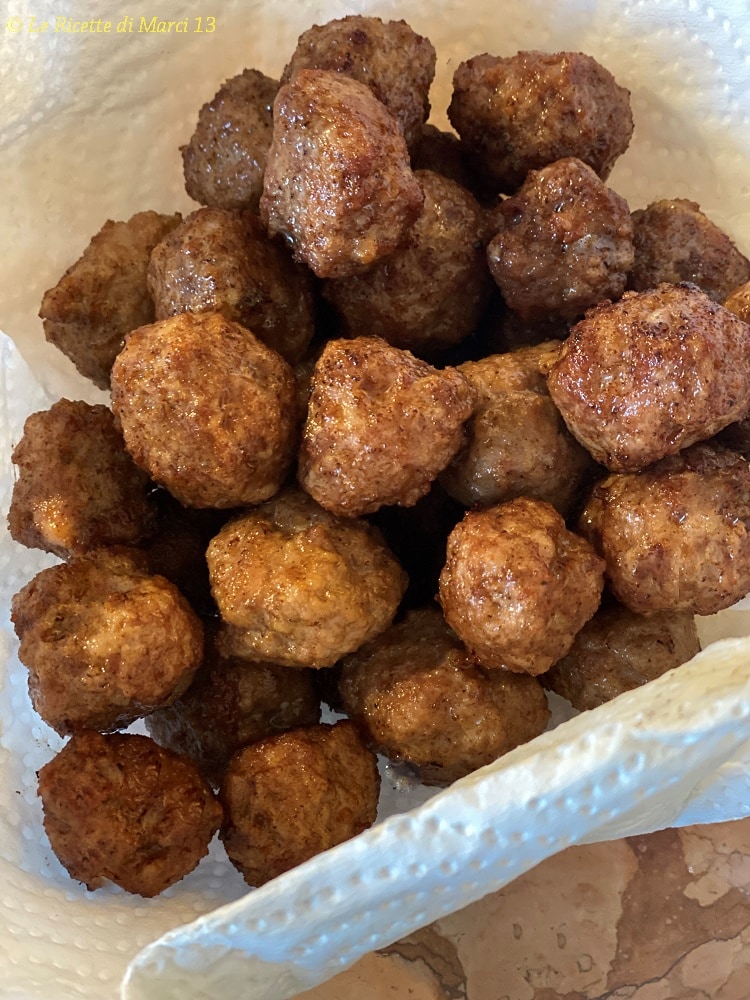
Quickly soak the stale rustic bread (at least a day old) covered with water and in another container place the mixed minced meat, egg, a pinch of salt, and a sprinkle of Parmesan.
Once the bread is soaked (it shouldn’t be mushy), squeeze it well and form the dough in a bowl.
Then prepare the tiny meatballs (about the size of a chickpea) and fry them in deep hot oil at 338°F for about 1 minute (the cooking needs to be very short, as they will finish cooking in the oven).
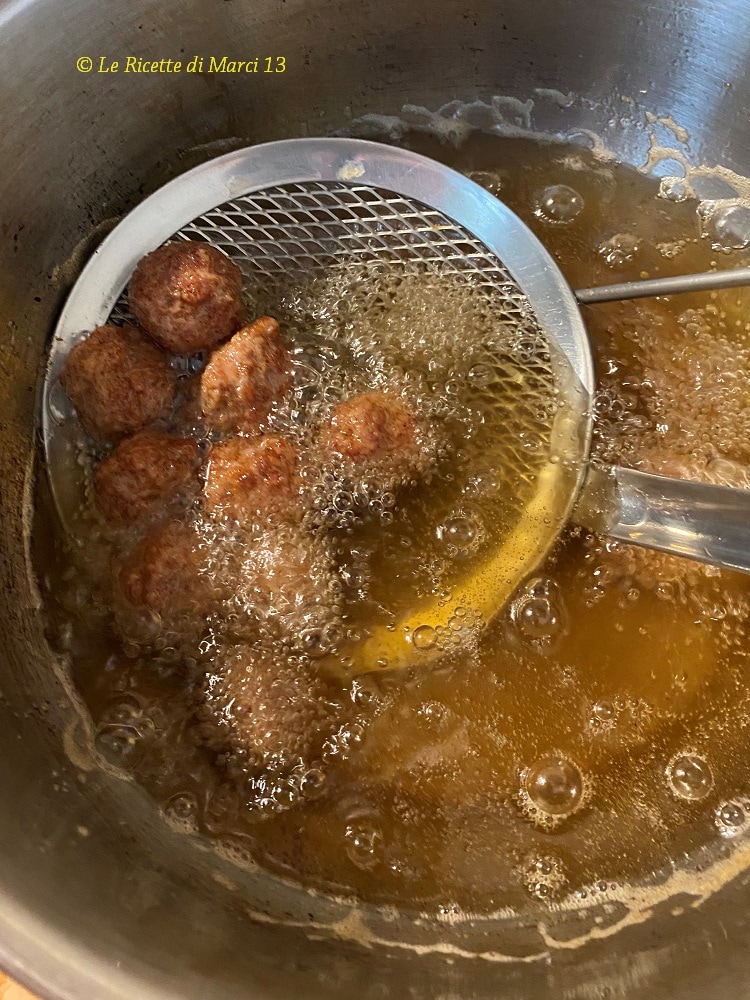
Place the meatballs as they are fried in a bowl with absorbent paper, set them aside to cool.
True Neapolitan Ragù should be dark and consistent like the one in the photo below (otherwise it’s just pasta with tomato sauce).
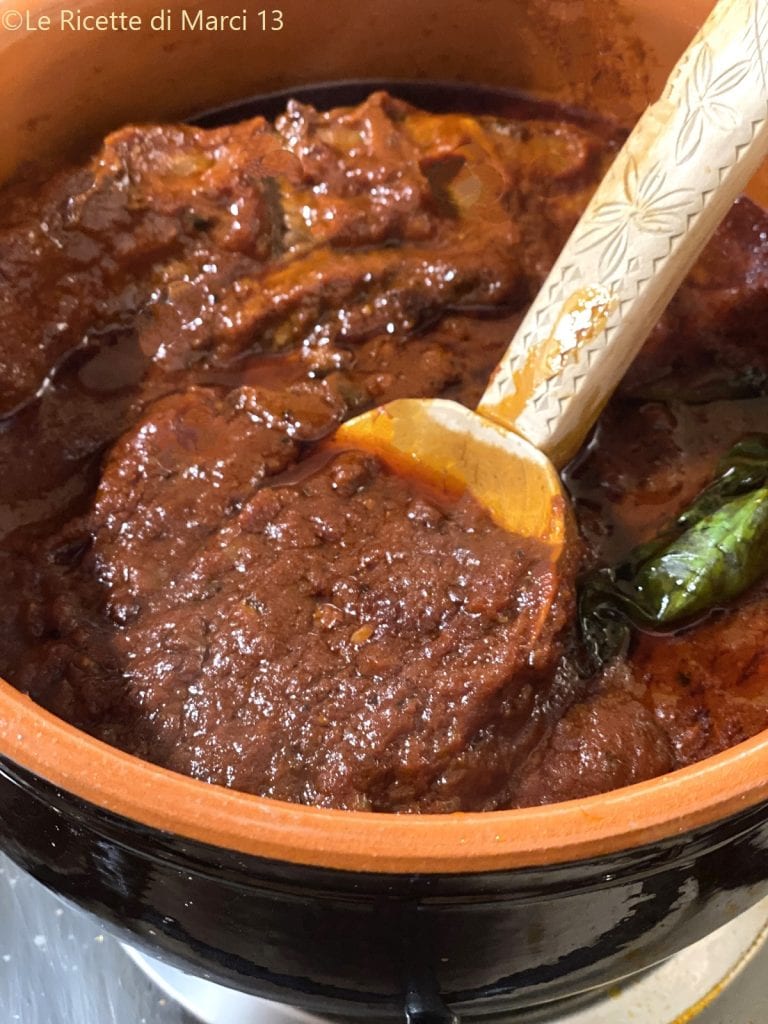
Prepare the Ragù following my foolproof recipe (one of the most searched on my Blog), you can find the entire step-by-step procedure by clicking on this link: “True Neapolitan Ragù“. I highly recommend preparing it at least one day in advance.
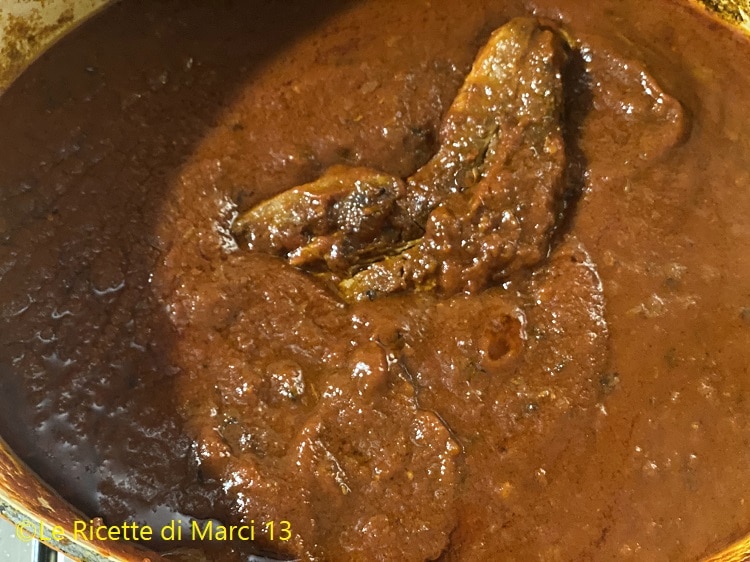
Once the ragù is cooked, remove the meat (which will be delicious as a second dish and so tender it can be cut with a breadstick, you can also freeze it) and collect the sauce in a suitable pot for reheating.
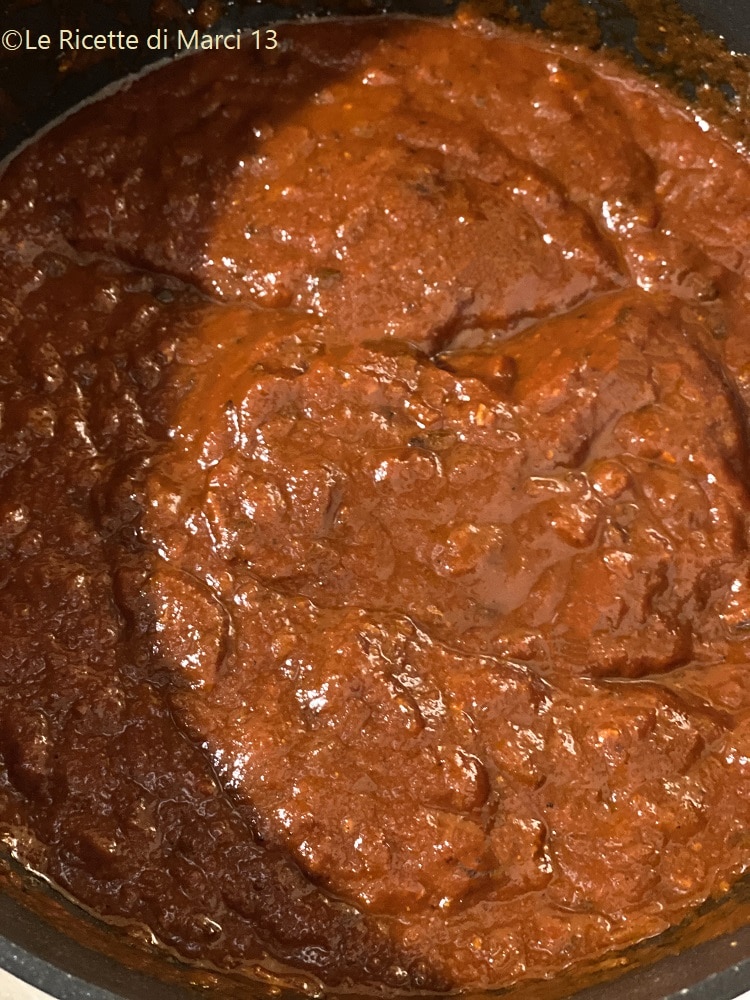
Take a small pot, fill it with cold water, and add the 3 eggs, place the pot on the stove, bring it to a boil, and cook the eggs for 10 minutes from the boil. Then gently slice them into thin regular slices.
The provola (and optional fiordilatte) should be bought the day before and left to drain.
Dice the cheeses: smoked provola and caciocavallo (or fiordilatte).
Cut the Neapolitan salami into strips (not cubes).
Take a bowl, pour in the ricotta, a pinch of salt, and a ladle of hot ragù.
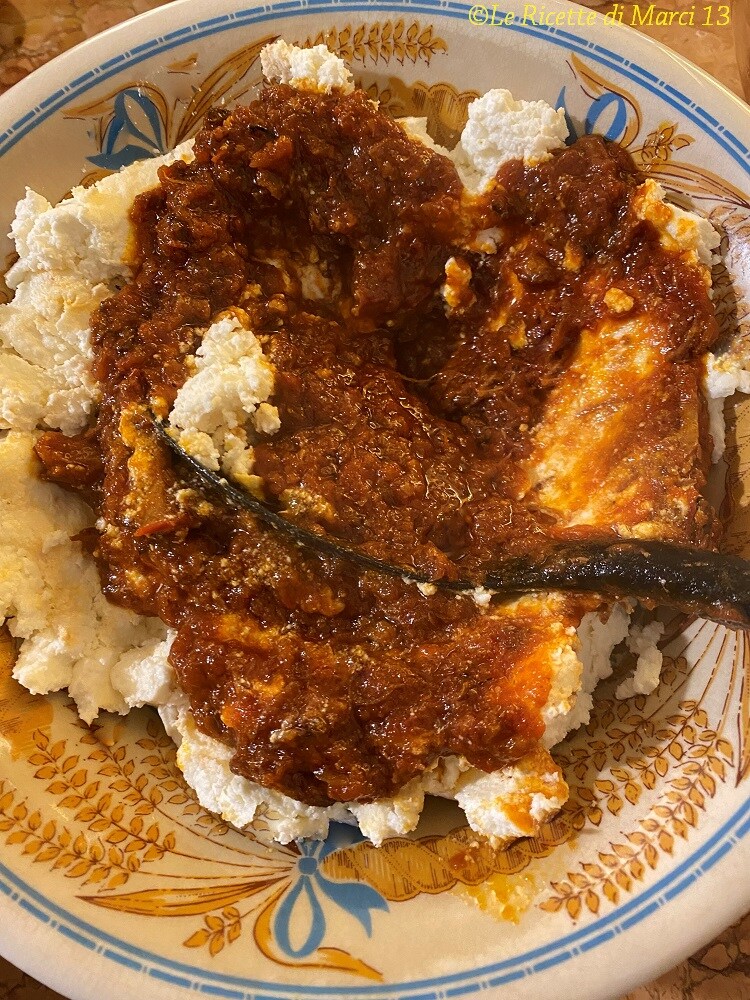
Mix well and add 1-2 more ladles of hot ragù (the rest of the ragù will be used to layer the lasagna), work these two ingredients until you get a soft cream.
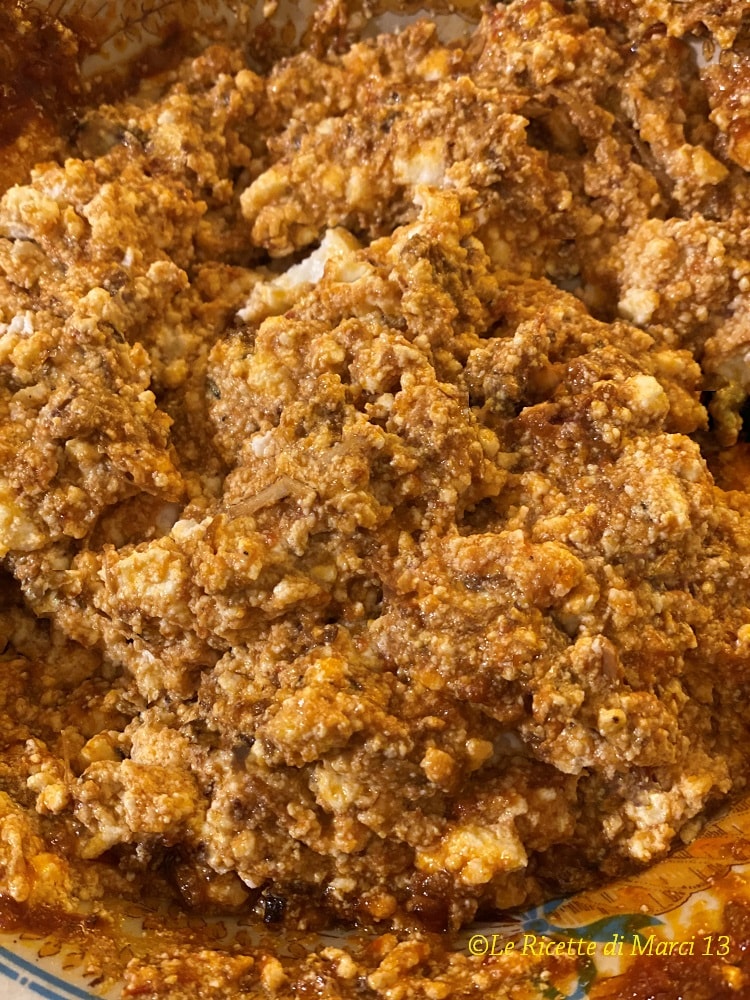
Take a rectangular baking pan (at least 12×8.5, 2 inches high, I like the lasagna tall, with at least 3-4 layers). Add 1 ladle of HOT ragù into the pan and spread it well to cover the entire bottom generously.
Start with a first layer of raw lasagna sheets, I place them raw, using the hot ragù trick to give a sort of pre-cooking to the pasta (but if you prefer, you can quickly blanch them and arrange them cooked on a clean cloth), cover the raw pasta with hot ragù and spread it well with the ricotta mixture, sprinkle the ricotta with some of the meatballs, smoked provola (well drained), caciocavallo (or drained fiordilatte) hard-boiled egg slices, salami strips (or thin slices of Lucanian dry sausages or thin slices of sausage) finish this first layer by sprinkling everything with grated Parmesan and a ladle of ragù.
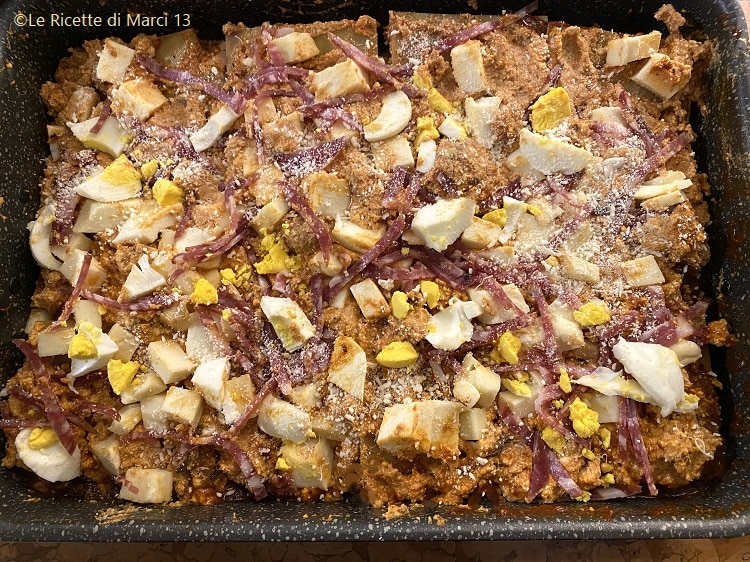
Start again with another layer of lasagna and proceed with the same sequence, forming at least 3 layers of lasagna, finally covering the last layer of pasta with plenty of ragù sprinkled with grated Parmesan and pats of butter.
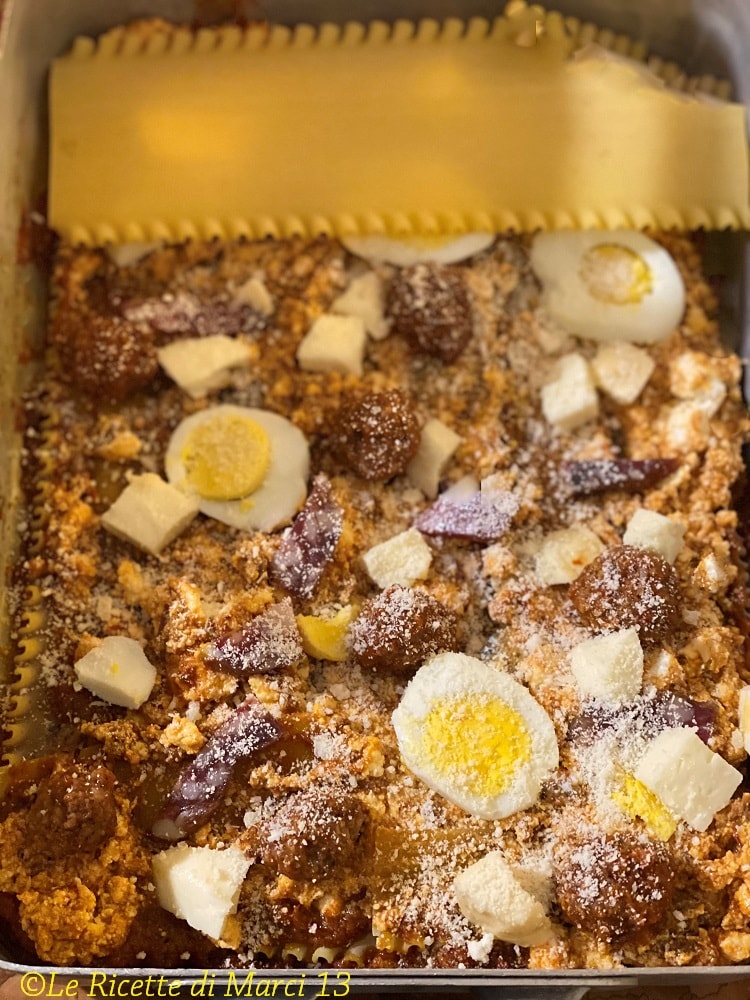
Bake the lasagna in a preheated hot oven at 320°F for about 40 minutes (cover for the first 20 minutes with aluminum foil), then uncover. The lasagna should cook slowly at medium heat to cook well inside and not darken too much on the surface.
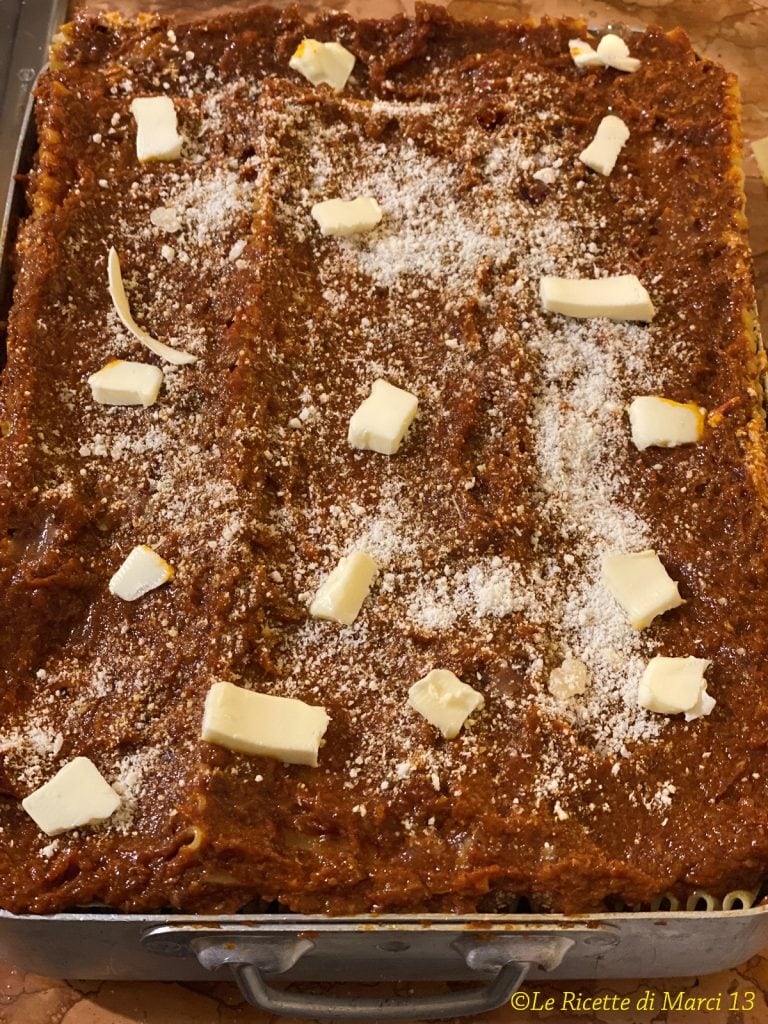
After the indicated time, remove the Neapolitan Lasagna from the oven and let it rest for about 20 minutes before cutting into slices! It’s even better if you cook it the day before, let it cool, and then reheat it the next day covered with aluminum foil for 10 minutes in the oven at 392°F.
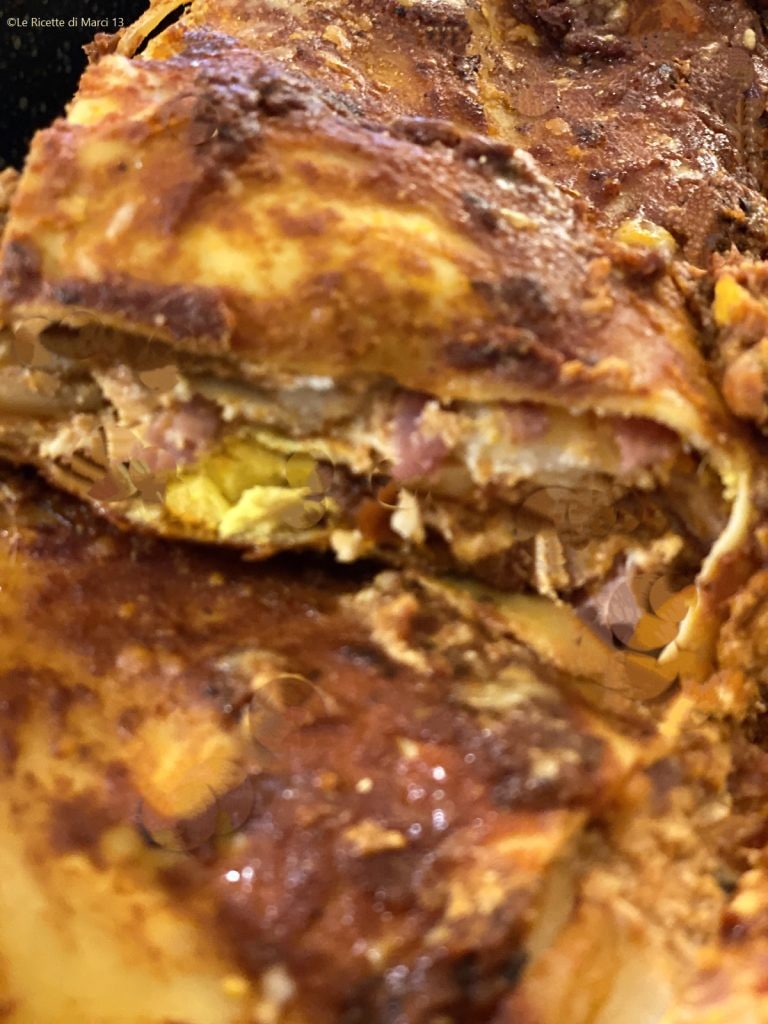

The lasagna can be kept in the fridge for about 2 days, either cooked or raw. You can also freeze it, but cooked and then thaw at room temperature and reheat in the oven covered with foil at 392°F for about 15 minutes.
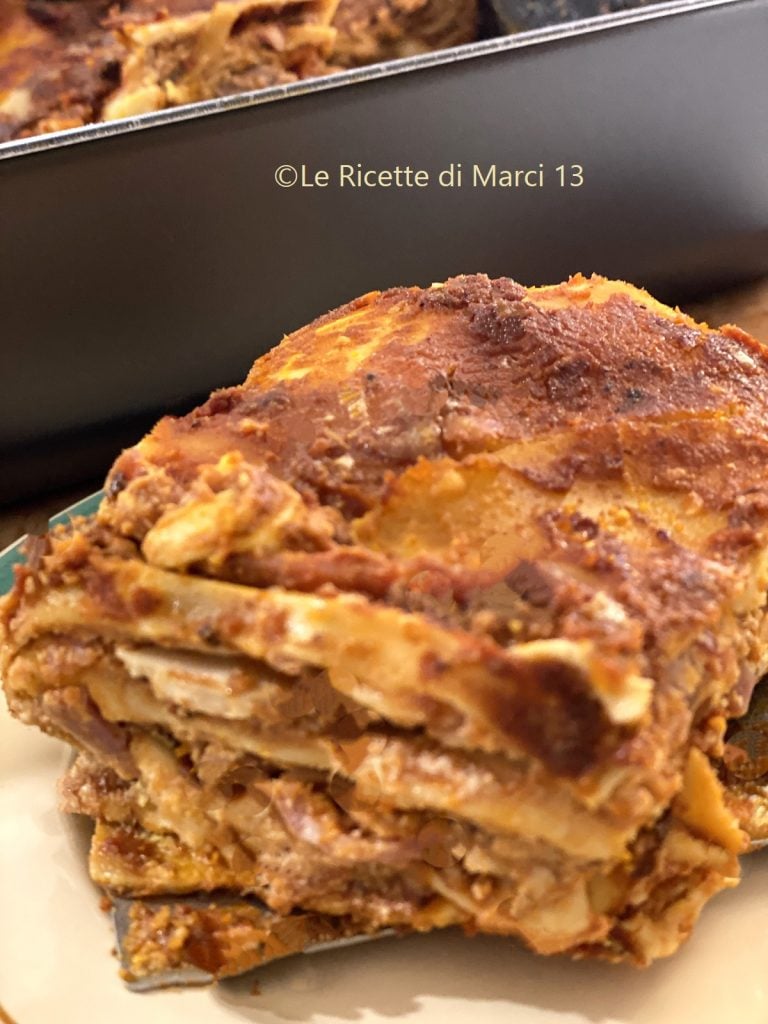
Shopping Tips!!!
To cook the ragù, I used this high-sided oval casserole by Le Creuset, perfect for slow cooking like ragù, genovese, delicious and super tender roasts, it spreads heat evenly and retains it for a long time, ensuring excellent results. The price is high, but now you can find it at a great price on Amazon, when I bought it there was also the option to pay in installments.
To fry the meatballs, I used this handy frying set by Tognana that you can find on Amazon.
To check the frying temperature of the meatballs, I used this handy food thermometer, equipped with a very useful clip with which the thermometer can be easily fixed to the edge of the pot or pan, allowing free hands during preparations (also useful for desserts, creams, caramel, etc.) at a great price on Amazon
Great for cooking lasagna, this non-stick and scratch-resistant lasagna pan.
FAQ (Questions and Answers)
What are the origins and history of Neapolitan lasagna?
The history of this dish is very ancient, making it difficult to trace. It was already readable at the end of the 13th century in the first Neapolitan gastronomic culture treatise, written in vulgar Latin by an anonymous Neapolitan at the Angevin court. The text was called Liber de coquina and the recipe was listed under the heading “De Lasanis”. Thus, at the Angevin court of Naples, the Roman-origin dough was cut into square shapes to be boiled in water, layered alternately, and seasoned with abundant cheese powder and, if desired, various spices.
Over time, tastes and ingredients changed, especially with the massive introduction of tomato in Naples’ cuisine at the beginning of the 19th century during the Kingdom of the Two Sicilies. Indeed, the cooks at King Ferdinand II’s court used to prepare very rich and laborious dishes, creating lasagna by inserting, among various pasta sheets, numerous ingredients including meat, eggs, sauce, and cheese.
Legend has it that Ferdinand II loved to enjoy this rich first course so much that he was nicknamed “King Lasagna.” To delve into the history and origins of true Neapolitan lasagna, also read here: “History of Lasagne, from Naples to Bologna” a very interesting article by Angelo Forgione.When is Carnival lasagna eaten?
During the Carnival period, on Fat Tuesday or Fat Thursday.

